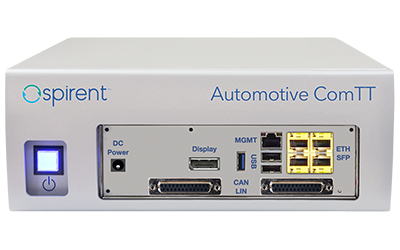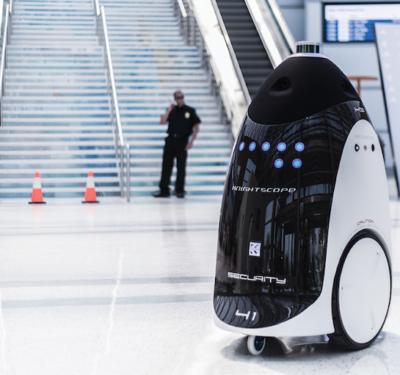
Photo courtesy of KVH Industries Inc.
KVH Industries, Inc., just announced that it has integrated its photonic chip technology into its high-precision fiber optic gyro (FOG) products and began delivering working prototypes of a new Photonic Gyro IMU to select leading automotive customers in late December. Developed by KVH engineers working in Tinley Park, Illinois, and Middletown, Rhode Island, the photonic chip technology is designed to enable the centimeter-level localization accuracy that autonomous vehicle developers have indicated is a requirement.
“This is groundbreaking technology that we expect will transform our fiber optic gyros and inertial systems, and I couldn’t be prouder of the tremendous effort by our incredible team of engineers,” says Martin Kits van Heyningen, KVH’s chief executive officer. “Our FOGs and FOG-based IMUs provide a higher level of precision than less expensive MEMS-based gyros and are already in use on more than 20 autonomous vehicle platforms today. With the development of this Photonic Gyro IMU, KVH can provide an inertial sensor with high precision but at a price expected to be competitive with MEMS systems when produced at high volumes.”
During development, the Photonic Gyro IMU prototype exhibited navigation performance superior to KVH’s existing FOG-based IMUs in angle random walk (ARW) and bias instability, two of the most important performance parameters that contribute to the safety of any autonomous vehicle, according to KVH.
The ARW, or noise, of the Photonic Gyro IMU prototype has been calculated at <0.0097°/Öhr, a very low value that supports extremely accurate navigation. In addition, the bias instability, or drift, of KVH’s Photonic Gyro IMU prototype is extremely low, measuring 0.02°/hour. Low drift is a key parameter for maintaining position and delivering precise turning measurement, which contributes to safety.
With the development of the photonic chip technology, KVH expects to be able to mass-produce high-performance inertial systems at lower cost; manufacturing processes are expected to be less labor-intensive than were previously possible in the fiber optic gyro industry. KVH manufactures its FOGs and FOG-based inertial products in its Tinley Park, Illinois, facility, and controls the design and manufacturing process.
To date, FOGs and FOG-based inertial navigation systems have formed key parts of integrated sensor systems shown to be essential for highly accurate autonomous car performance. For precise navigation and position, an autonomous vehicle uses a combination of sensors, primarily the GPS and inertial navigation systems. Inertial navigation systems provide crucial dead reckoning capability when the vehicle is required to operate within a GPS-denied scenario, such as that created by buildings, parking garages, and other obstacles common in a city environment. Given that traffic lanes typically measure three meters, autonomous vehicle engineers are focusing on centimeter-level precision to ensure the car is operating safely within its lane.
“Sensor fusion is essential for autonomous vehicle operation, and the accuracy provided by our FOGs and FOG-based IMUs has been acknowledged in the industry as setting a high bar for inertial navigation in driverless cars,” says Kits van Heyningen. “Now, with the high precision we are seeing with our photonic chip technology, we think photonic gyros may become a core part of the success of autonomous vehicles. We are thrilled at the possibilities.”
Based on a photonic integrated circuit, KVH’s patent-pending photonic chip technology has relevance for KVH’s entire line of FOGs and FOG-based inertial systems, which are already considered high-performance inertial sensors.
KVH’s offerings are designed to provide assured navigation and autonomous accuracy using high-performance sensors and integrated inertial systems. The company’s widely-fielded TACNAV systems are currently in use by the U.S. Army and Marine Corps as well as many allied militaries around the world. KVH’s FOGs and FOG-based IMUs are in use today in a wide variety of applications ranging from optical, antenna, and sensor stabilization systems to mobile mapping solutions and autonomous platforms and cars.






